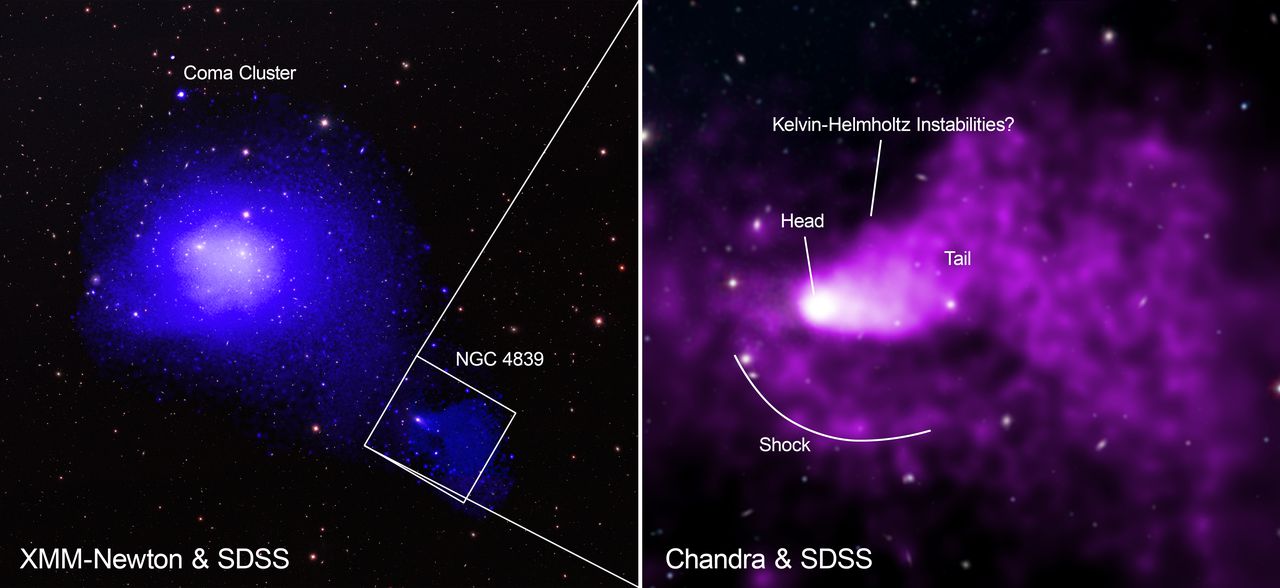Galaxies dive into more galaxies leaveingtail 1.5M light years long – the longest ever
A galaxy group diving deep into a much larger galaxy cluster was caught by NASA’s Chandra X-ray Observatory and an Alabama scientist has presented the results to the American Astronomical Society.
As galaxy group NGC 4839 plunged into the galaxy cluster, the group left behind what NASA called “an enormous tail of superheated gas” 1.5 million light-years long. It is the longest such tail ever seen and hundreds of thousands of times longer than the distance between the Sun and its nearest star, NASA says.
The hot gas that surrounds galaxy groups and clusters is thin but scientists study it using X-rays because the gas is a large part of both groups and clusters. Galaxy groups are collections of 50 galaxies or less bound together by gravity while clusters contain “hundreds of thousands of individual galaxies,” NASA said.
It also is an opportunity to study the physics of the tail’s gas. For example, researchers found a shock wave like a jet’s sonic boom meaning the gas is moving at about 3 million miles per hour. They also found mild turbulence which NASA said implies the heat transfer in the group is low.
Stephen Walker of the University of Alabama at Huntsville presented the results recently to the 242nd meeting of the American Astronomical Society in Albuquerque, New Mexico. NASA’s Marshall Space Flight Center, also in Huntsville, manages the Chandra program. The Smithsonian Astrophysical Observatory’s Chandra X-ray Center controls the telescope’s science operations in Cambridge, Mass. and its flight operations in Burlington, Mass.
The results were also published by Walker, Mohammad Mirakhor and James Runge in the June issue of the Monthly Notices of the Royal Astronomical Society. Mirakhor and Runge are also from the University of Alabama at Huntsville. NASA’s full account is here.
